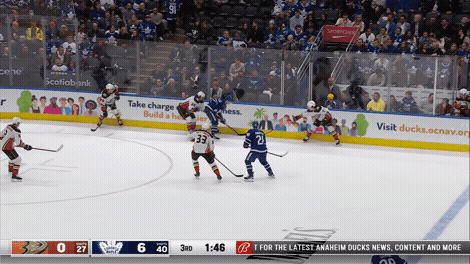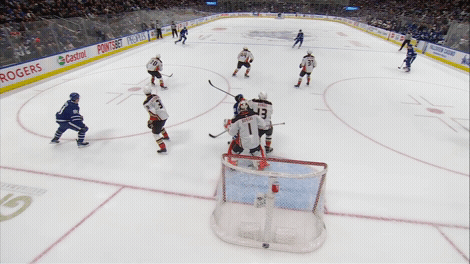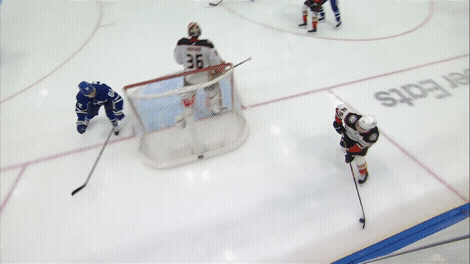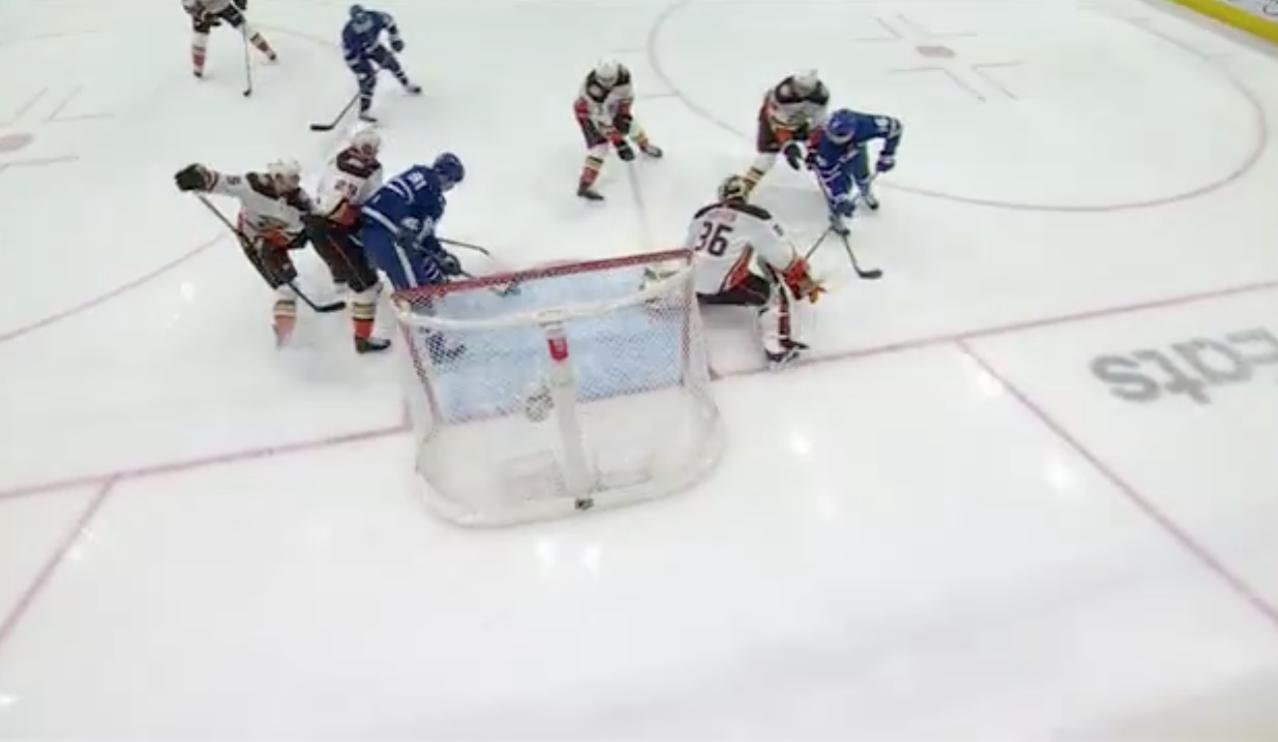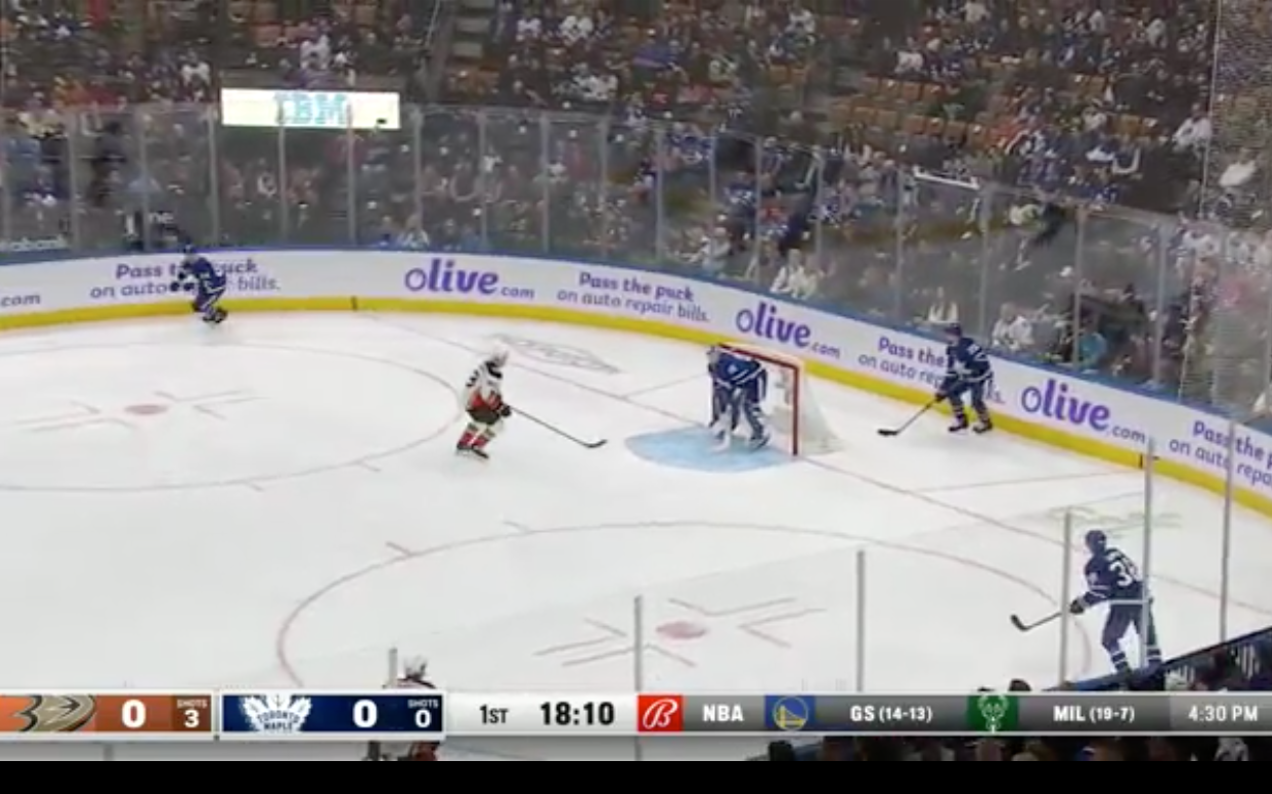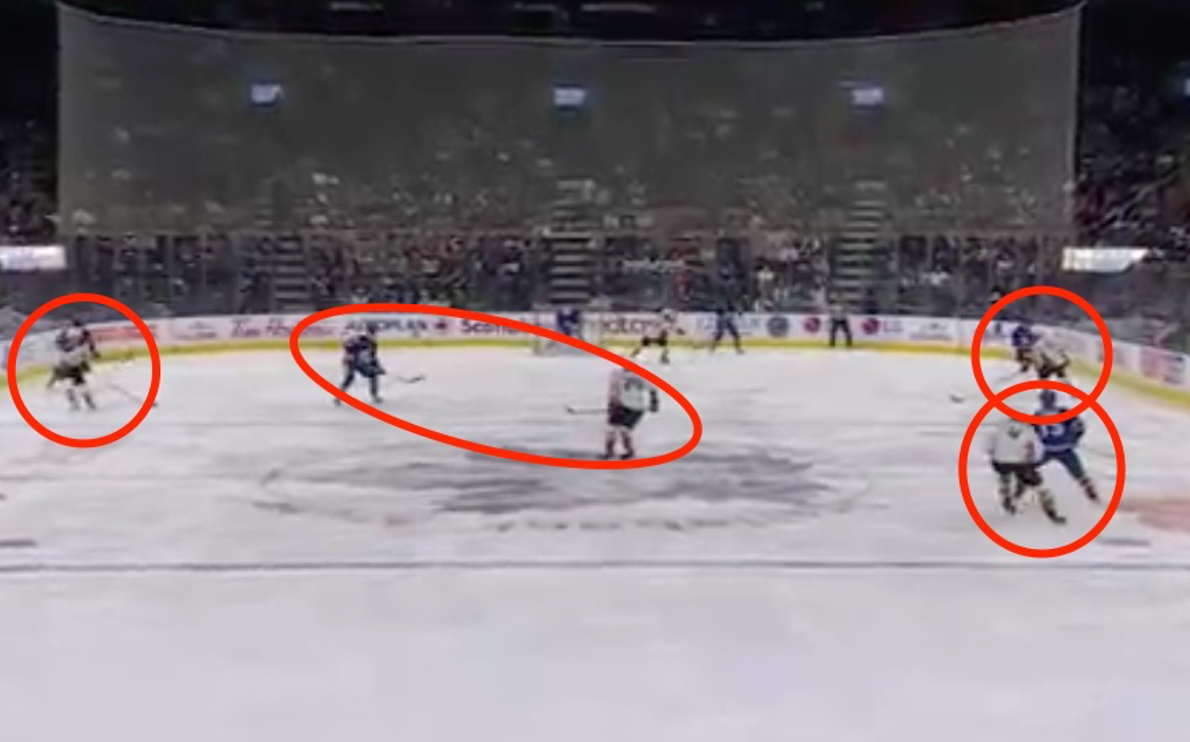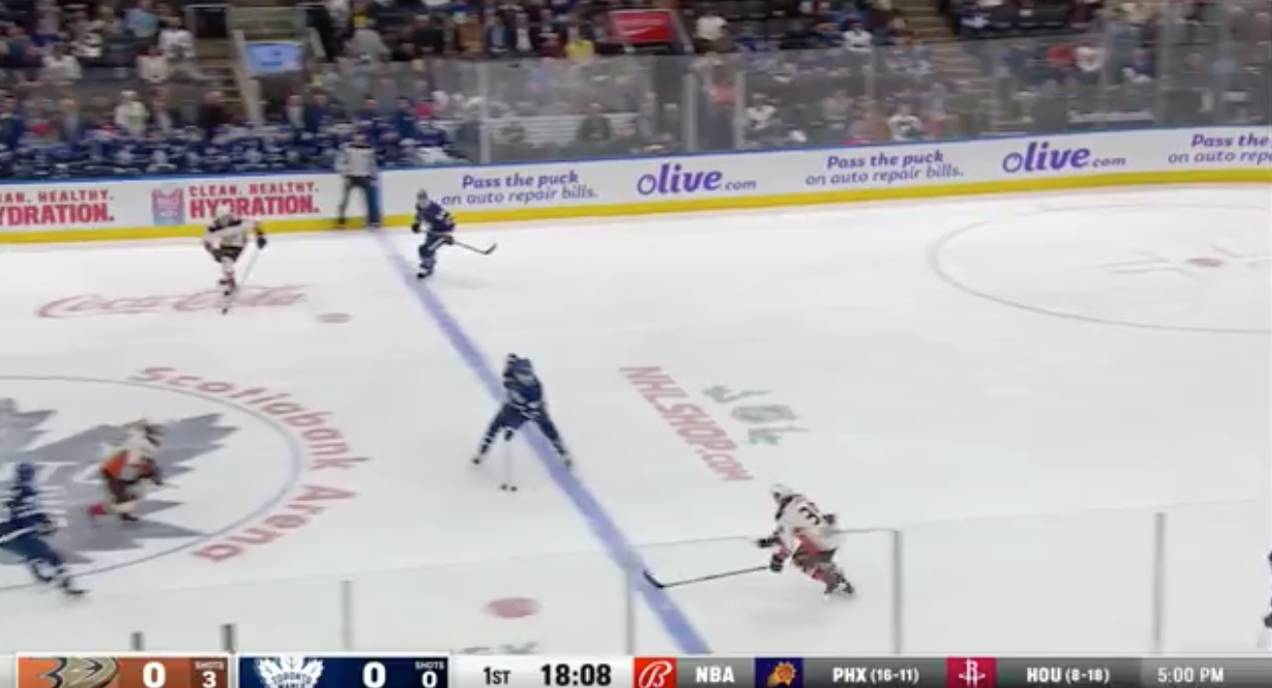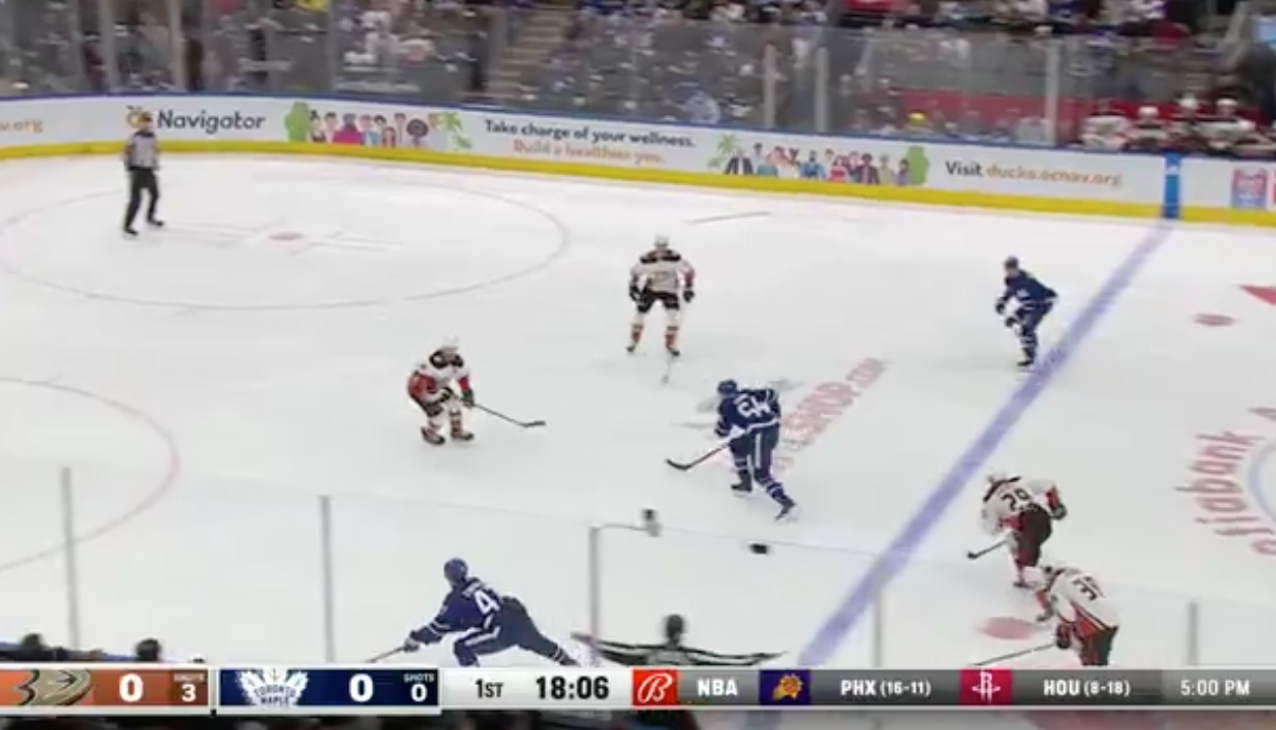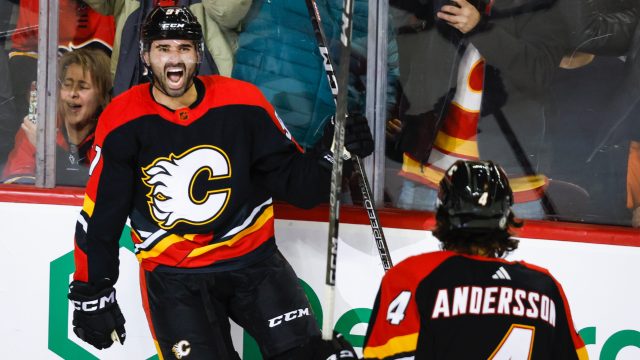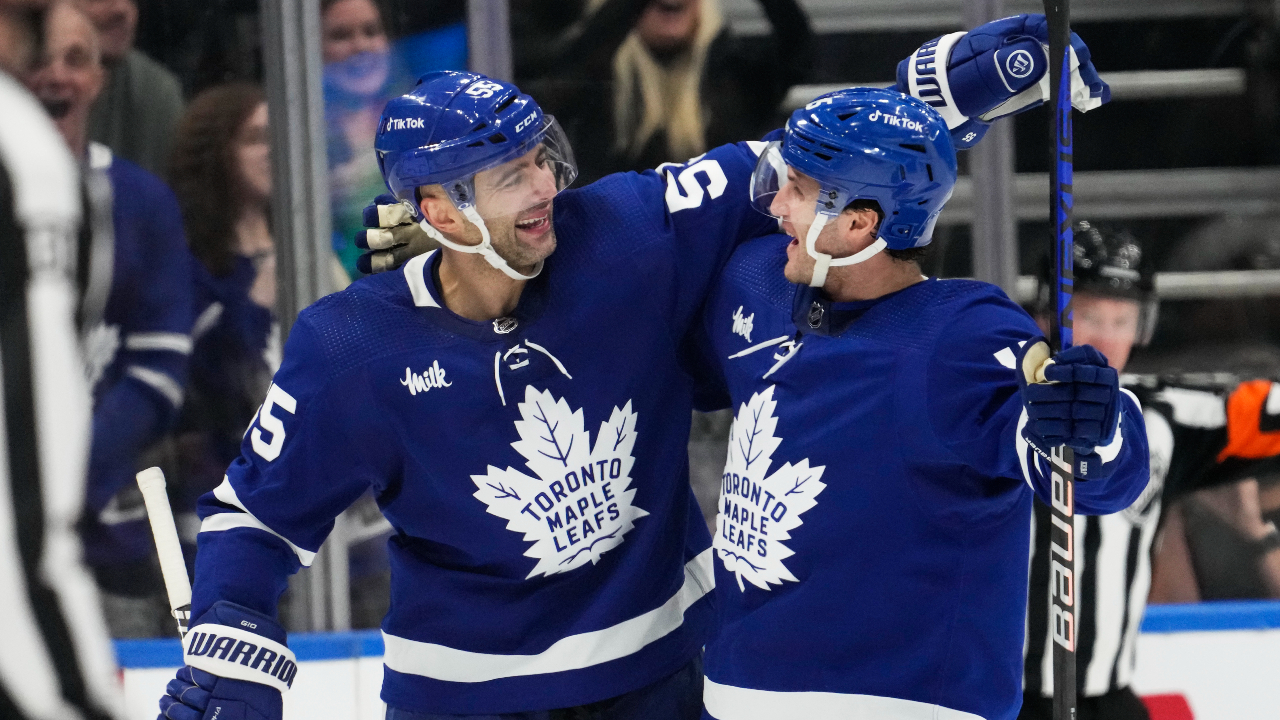
If I may start this column like a high schooler writing an essay: Oxford Languages Dictionary defines the phrase “dead duck” as “a person or thing that is defunct or has no chance of success.” Which kinda sounds like the Anaheim Ducks on Tuesday against the Toronto Maple Leafs, no? Toronto was coming off two days rest, was at home, and they hadn’t lost in regulation in over a month. Meanwhile, the Ducks were on a tail end of a back-to-back and have won just a single solitary game in regulation in 30 tries so far this season.
So yeah. “Dead duck,” dead Ducks, or however you want to say it, it played out as you’d expect, with Toronto winning by a touchdown and extra point, surrendering no goals in the process.
What you saw was the clear contrast between how NHL teams look when it’s going well compared to the opposite, and how it shows up in “buy in.” When you’re on a team that you know is going to lose the game, the goal becomes giving the impression of doing the right things, rather than actually putting your body on the line to execute those things, which just don’t matter as much when the outcome of the game (and season) is writ.
With the Ducks, what we saw was players standing near Leafs opponents – in the perfect position to show up on video the next day and say “I had my guy” – but not reaching the physical battle level necessary to defend at the NHL level. It’s rare that the puck will fall right on the stick of the guy you’re “covering” in those moments, but when it does — as it did so many times last night — you get exposed.
Here we see Sam Carrick, a usually hard-nosed player, just playing to get to the buzzer in a game that’s long over, “defending” Joey Anderson. He’s in front of Anderson, where he’s supposed to be, now can we please just play run time until the final buzzer?
But the puck drops right in Anderson’s lap (middle of your screen), and Carrick is briefly exposed for what’s hardly Game 7 level desperation:
We saw it on Michael Bunting’s goal. Simon Benoit “has his guy” in Bunting here (net front). He’s even cross-checking him, which coaches like! But he’s not sincerely tying Bunting up and defending him. He simply “has his guy,” technically, until he’s exposed by the puck showing up:
There was no greater case of this than on the John Tavares goal, where Trevor Zegras is on Mitch Marner’s back, just on the wrong side (which happens when you leave the zone too early) as Dmitry Kulikov “has his guy” in Tavares, before losing the battle at a crucial moment (net front):
All night, the Ducks were roughly in the vicinity of where they should be, but not defending with the force or commitment to stay on the inside, to get sticks up, to do the little things necessary that prevent goals. Those things are hard, and sometimes hurt to do. But if you don’t … well, check out this screen grab. Woof:
It was that way from the first moments of the game, where the Leafs were in a set breakout – as in, the Ducks had time to set up their defensive structure – and they went from this, as the Leafs set up…
…to Kulikov not getting tight over top of one guy (Engvall), which is no big deal right? He can claim he was above him, as he should be:
Then the pass comes, and the gap is bad, so he has to dive in and make a desperation poke:
And from 18:10 on the clock to 18:06 the Leafs have a 3-on-2, with Kulikov chasing, and their first goal of the game:
That should never happen against a set forecheck.
This is the overarching point: it would’ve been work for Kulikov to gap up there on Engvall, in that he would’ve had to get up the ice, stop and pivot and get coming back with a speedy and strong Engvall. And nine times out of 10, Engvall wouldn’t even get the puck there, so that work would go unnoticed, and it would’ve felt like work for nothing.
This is the reality of what makes Patrice Bergeron so impressive. He works in all these little situations so that guys never get the puck, so you don’t get to even see his great defence – plays are nullified before they develop.
And that’s what loops me back around to the other side of this game, and how the Leafs are playing.
Yes, they’re getting great goaltending, but I imagine it’s easier to goaltend for the Leafs when they aren’t giving up nearly as many opportunities as they were early in the season. And when they are giving up looks, they’re usually heavily contested.
SportLogiq had a great detail about the Leafs’ progression this season, which highlights how they’ve gone from a 4-4-2 team through 10 games to the third-best team in the NHL by points percentage, chasing down the Bruins and Devils for the Presidents’ Trophy. Their forwards are the opposite of what we saw from the Ducks, in that they don’t just stand by the play in the D-zone, they get involved, and they often win the puck.
In the first month of the season, Toronto’s forwards cruised around and waited for good things to happen. Since then, they’ve bought into making good things happen with takeaways, loose puck recoveries, and battles won.
In November Toronto was the best team in the NHL at getting defensive involvement from their forwards, which means less pressure on their defence and goalies (which is great when you’ve got piles of D injuries).
Some of this is coaching, sure. But a big part is maturity of the players (and the Ducks are young, even if those highlighted above aren’t necessarily). It’s being willing to do the little, harder, unnoticed things that help defend.
Most of all, though, is that this habit is reinforced by winning. It’s easy to convince yourself that a hard effort to win body position (in a battle where the puck may never show up) is worth it when your team keeps emerging on the right side of the scoreboard. It must be working, right?
But it’s harder to sell yourself on that effort when you’re down six on the road in a back-to-back as the last place team in the NHL. It’s an old trope (with far heavier tones than what I mean here) that what’s done in the dark will be brought to the light, but it’s the truth when it comes to effort and battles and defensive buy-in in the game of hockey.
You can’t fake it out there. There will be nights when some bad bounces expose you. The teams that work with no promise of praise get rewarded in the end.


